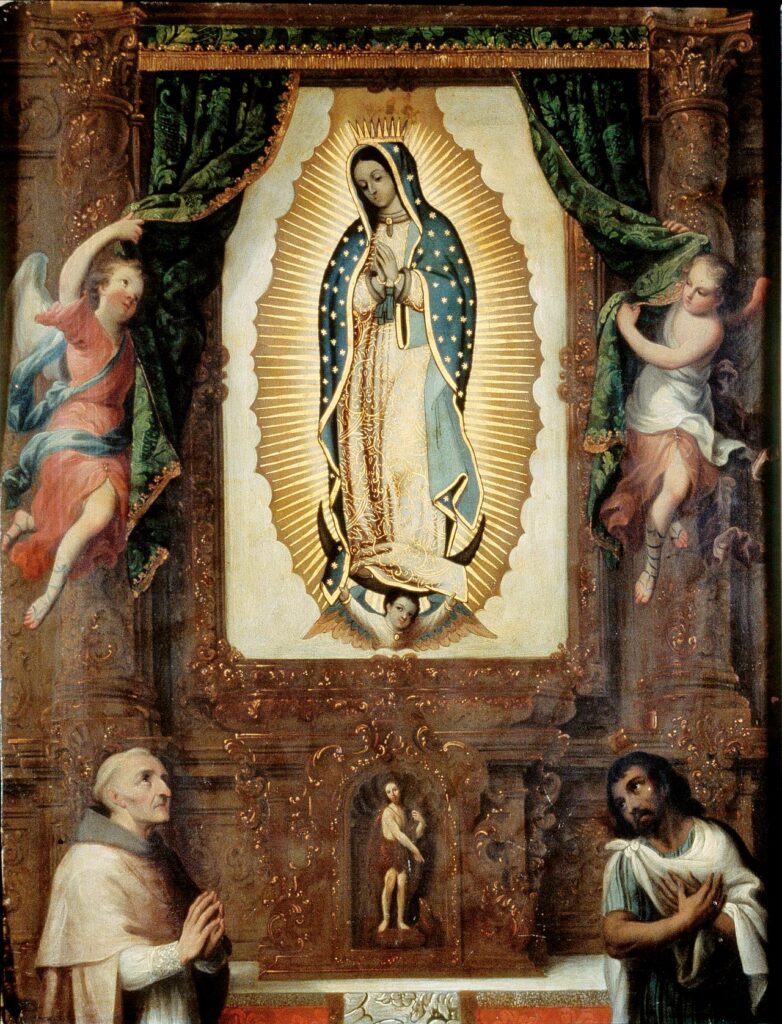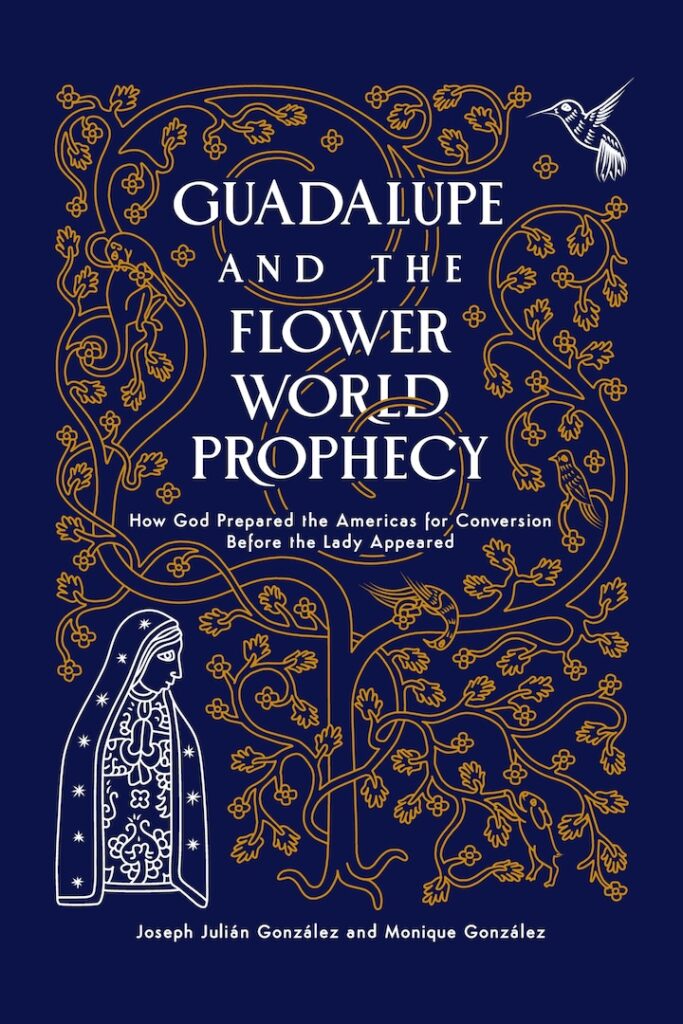Since Last Friday, we’ve had a remarkable string of feasts: the Immaculate Conception, St. Juan Diego Cuauhtlatoatzin, Pope St. Damasus I (who reshaped the Western Church by asking St. Jerome to translate the Bible into Latin and by turning the liturgical language to Latin from Greek), St. Lucy (today), St. John of the Cross (tomorrow, one of the greatest mystics the world has ever seen). But above all, yesterday, Our Lady of Guadalupe. Guadalupe, of course, has great significance for us in the Americas; not least because it had the unprecedented effect of converting, with astounding speed, virtually a whole continent.
It’s never happened elsewhere in Christian history. In the end, it’s a mystery of God’s grace. But Sophia Institute Press has just published an illuminating account by Joseph Julián González and Monique González, Guadalupe and the Flower World Prophecy: How God Prepared the Americas for Conversion Before the Lady Appeared. In short, as the subtitle indicates, there was a kind of preparatio evangelica going on in Meso-American cultures for thousands of years before the arrival of the missionaries who accompanied the Spanish explorers.
Guiding native peoples into Catholicism was difficult, as the missionaries quickly discovered. At first contact, there was enough cultural material present on both sides to put the two cultures at least on reasonable speaking terms. But there were few converts. It took a divine spark to jump the gap between very different peoples and bring what seemed impossible divisions into fruitful harmony.
Though there are many uncertainties in interpreting archeological remains, artifacts, and texts, the Gonzálezes offer a reasonable account of certain key strains in Meso-American cultures that made conversions more likely, beginning with the Olmecs, a civilization that flourished for about 1000 years (from 1500 BC to 400 BC), then the Mayans (classic period 250-900 AD), and finally the various people, among them the Chichimecas – the people of St. Juan Diego – at the time of Mary’s appearance on the hill at Tepeyac.
Anyone familiar with Meso-American cultures will recall the multiple gods and goddesses, and practices like human sacrifice that seemed like insurmountable obstacles to the Christian message. And all that was certainly one strain in the cultural history. Researchers estimate, for instance, that tens of thousands of human beings were sacrificed to the gods annually in areas controlled by the Aztecs, perhaps as many as 80,000 in the dedication of the Templo Mayor in Mexico City alone.
But there was a paradoxical side to this bloodiness. The Mexican novelist Carlos Fuentes, no friend to Catholicism, has commented: “One can only imagine the astonishment of the hundreds and thousands of Indians who asked for baptism as they came to realize that they were being asked to adore a god who sacrificed himself for men instead of asking men to sacrifice themselves to gods, as the Aztec religion demanded.”

The Gonzálezes tend to downplay this part of Meso-American cultures, with some justice because the Spaniards gradually stopped these outrages. Instead, they bring into view sophisticated theological, philosophical, liturgical, and even artistic currents in Meso-American culture. Their account has to be read in detail to be properly understood, but in broad strokes this other dimension contained several potential “bridges of understanding.”
Nahuatl culture was highly sophisticated and disciplined. Children were formed in “face and heart,” which like many terms in translation present difficulties and ambiguities. But this seems to mean that they were formed within and without, learning the songs and liturgies of their people so that they could reproduce them exactly, word for word. This educational feature was to become important in the transmission of the “Guadalupe Event.”
Songs carried a great deal of cultural weight and, in the Gonzálezes’ telling, were regarded as messages – in a sense almost like divine revelations, “the only truth on earth – in a world that the Nahuatl tradition regarded as of little value, perhaps even “fallen” in a way. The traditional songs were thought to have been brought back from the Flower World Paradise, a realm that native Meso-Americans longed to inhabit after death. Only the great and the “worthy” could do that, however, and they were few. Some speculated in word and song about how they might become “worthy,” and who could make them so. They got an answer at Tepeyac.
St. Juan Diego was a macehual, just a humble ordinary person, and therefore not “worthy” according to Nahuatl tradition, but his encounter with Our Lady and the improbable story of the flowers in December seemed to parallel an earlier traditional song. Skeptics have argued, even at the time of his canonization, that the Guadalupe story was just made up from such traditional elements. But in the earlier song, the singer failed in his quest.
By contrast, the Lady tells Juan Diego that she is the mother of the true God. There had been some ambiguity in Nahuatl tradition about this God, but she groups together several traditional titles into One: He’s the true God, who gives life, creator, owner and lord of all, “the god of far and near,” sky and earth. He also makes people “worthy” of the Flower World Paradise.
The sequel – flowers, tilma, bishop – is familiar, but the Gonzálezeses identify some key elements for the subsequent explosion of belief. First, the Nahuatl culture was strictly traditional, believing that what was new was yancuic(“unworthy of belief”). That’s why the Christian friars had a hard time converting anyone to what appeared novel by mere argument. But once the Christian God was described using several traditional terms, the centuries-long aspirations of the songs were fulfilled. And the admission of common people under the Christian universalism spread – with the singing of the new songs in continental networks – like wildfire.
The sheer numbers still beggar belief, as they did at the time, each Catholic priest baptizing hundreds of thousands in short order. A mystery of grace, to be sure, but also like nothing so much as suffering humanity finding long-awaited fulfillment in “the only truth on earth.”
















